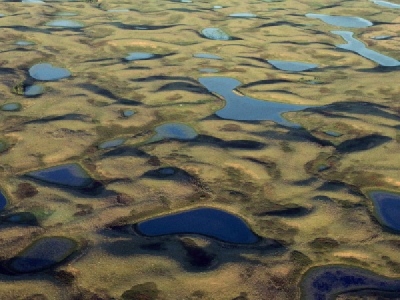
Posted on February 13, 2018
By David Smith, The Siskiyou Daily News
The State of California has joined a group of other states and the District of Columbia in a suit seeking to overturn the United States Environmental Protection Agency’s decision to suspend its own “waters of the United States” rule.
The State of California has joined a group of other states and the District of Columbia in a suit seeking to overturn the United States Environmental Protection Agency’s decision to suspend its own “waters of the United States” rule.
The suit was filed on Feb. 6 and includes the states of New York, California, Connecticut, Maryland, New Jersey, Oregon, Rhode Island, Vermont, Washington, Massachusetts, and the District of Columbia.
In 2015, the EPA and the United States Army Corps of Engineers issued a Clean Water Rule in an attempt to clarify which waters are protected by the Clean Water Act, following years of lawsuits and questions about the law’s scope.
According to the suit, in the 1980s, regulations defined the waters of the U.S. as “waters used or susceptible of use in interstate or foreign commerce … commonly referred to as navigable-in-fact or ‘traditionally navigable’ waters … interstate waters … the territorial seas, and … impoundments of jurisdictional waters, as well as other waters having a nexus with interstate commerce.”
The suit notes that over the years, “confusing and inconsistent interpretations” of those guidelines left many questions for states and those seeking permits. In 2006, the United States Supreme Court, in Rapanos v. United States, ruled that a “significant nexus” standard should be applied in determining whether waters are subject to the CWA – namely, if a body of water, including wetlands and relatively permanent bodies of water have signifcant impacts on other waters deemed navigable, then those waters are also covered under the CWA.
In an attempt to clarify once and for all what the CWA covers, the EPA and ACOE issued their Clean Water Rule in 2015, but the rule – both upon its issuance and in the several months leading up to its finalization – drew controversy from groups across the nation.
In particular, agriculture groups expressed concern that the definition left open standing water on private property and other temporary water bodies to be subject to CWA rules and permitting requirements.
A number of lawsuits have been filed to overturn the 2015 rule, but over the course of 2017, the two agencies issued two proposed rules: One to potentially rescind the 2015 rule, and one to suspend its application until 2020 at the earliest, returning to the 1980s definitions of what waters are subject to the CWA.
The states, in their suit, argue that the 1980s rules are insufficient to protect water quality, and thus harm the states’ ability to protect the public interest in those waters, and their economies.
The suit alleges that the two agencies failed to meet requirements under the Administrative Procedure Act with respect to their authority to effectively overturn the Clean Water Rule, including the amount of time given to the public to comment on the suspension of the rule. They also argue that the agencies did not adequately describe the scientific evidence on which the suspension of the rule was based – calling attention to the fact that the 2015 rule was based on extensive research conducted by the two agencies.
The states’ request is that the court find that the suspension of the Clean Water Rule was “arbitrary, capricious, an abuse of discretion, or otherwise not in accordance with law” and overturn the rule, returning CWA jurisdiction determinations to guidelines in the 2015 rule.
Source: The Siskiyou Daily News





